In this blog post, we will explore several creative DIY Fire Pit Ideas that will enhance your outdoor space and provide a cost-effective and enjoyable way to add warmth and ambiance to your gatherings.
Imagine yourself on a cool evening, gathered with friends and family in Adirondack chairs, surrounded by the warm glow of a crackling fire. The flickering flames dance in the night, creating an inviting ambiance that draws everyone closer.
This picturesque scene is not just reserved for luxurious resorts or expensive outdoor spaces. With a little creativity and some do-it-yourself spirit, you can create your own fire pit right in your backyard.
Get ready to transform your outdoor space into a cozy oasis where friends and family can gather, stories can be shared, and memories can be made. Whether you have a sprawling backyard or a small patio, there’s a DIY fire pit idea waiting to bring warmth and charm to your outdoor haven.
Let’s dive in and discover the perfect fire pit design for you.
What is the best thing to make a fire pit out of?
When it comes to creating your own fire pit, the choice of material is dependent on several factors, like your preference, budget, and space availability. Below are some common options to consider:
Concrete
Consider using concrete if you’re looking for a fire pit that combines durability with a modern look. Concrete is a composite material made by mixing cement, water, aggregates (such as sand and gravel), and often additional additives. You have the option to build a circular or square-shaped pit using concrete blocks or create a custom design by pouring a concrete base. Concrete is heat-resistant and provides a stable foundation for the fire pit.
Stone
Stone fire pits provide a rustic and natural look. You can use stacked stones or fieldstones to create a classic circular or square fire pit. Stones retain heat well and can withstand high temperatures. Ensure that the stones are heat-resistant and suitable for fire pit construction.
Bricks
Bricks are a versatile option for DIY fire pits. They offer a classic and timeless appeal. You can build a brick fire pit using a variety of patterns, such as a circular or square design. Bricks retain heat effectively and create a sturdy structure.
Steel
Steel fire pits are a popular choice due to their durability and sleek appearance. You can purchase a steel fire pit bowl or repurpose a steel drum to create a unique design. Steel fire pits are often portable and can be easily moved around your outdoor space.
Recycled Materials
If you’re looking for an eco-friendly option, consider using recycled materials. Old washing machine drums, unused tires, or salvaged metal can be repurposed to create a unique and sustainable fire pit. Just ensure that the materials are safe for fire use and won’t release harmful fumes.
In-ground
Another option is to dig an in-ground fire pit, which creates a natural and minimalistic look. This design can be made using sand or gravel as a base and lining the pit with fire-resistant materials like rocks or bricks.
Ultimately, the best material for your DIY fire pit depends on your desired aesthetic, budget, and availability of materials.
Whichever option you choose, ensure that the materials used are fire-resistant and safe for containing the flames. Additionally, always follow proper safety precautions and local fire regulations when building and using your fire pit.
What should you put in the bottom of a DIY fire pit?
When constructing a DIY fire pit, it’s important to create a proper base at the bottom to ensure safety and enhance the performance of the fire pit. Here are a few options for what you can put in the bottom of your DIY fire pit:
Sand
Placing a layer of sand at the bottom of your fire pit is a common practice. The sand acts as a natural insulator, helping to distribute heat evenly and protect the ground underneath from excessive heat. It also creates a barrier between the fire and the base of the pit, reducing the risk of damage.
Gravel
Another option is to use a layer of gravel at the bottom of the fire pit. Gravel provides drainage and can help with airflow, which contributes to better combustion. It can also help prevent the accumulation of moisture and improve the overall stability of the fire pit. It’s important to use the right kind of gravel, though. For example, pea gravel, although aesthetically pleasing and commonly used in landscaping, is not designed to withstand the high temperatures generated by a fire. When exposed to intense heat, pea gravel can expand, crack, or even explode, posing a safety hazard.
Fire-resistant Bricks or Pavers
If you’re building a permanent fire pit, you may choose to line the bottom with fire-resistant bricks or pavers. This helps to protect the base of the pit and provides a solid foundation. Ensure that the bricks or pavers are designed for high temperatures and can withstand the heat generated by the fire.
Fire Pit Mat or Pad
Alternatively, you can use a fire pit mat or pad specifically designed to protect the ground or surface underneath the fire pit. These mats are made from fire-resistant materials and provide additional insulation and protection.
Lava rocks and river rocks can be used to enhance the aesthetics of a fire pit, but it’s important to note that they do not significantly impact the overall performance of the fire or the heat output. Their primary function is to provide a protective layer and decorative element at the bottom of the fire pit.
When selecting rocks for your fire pit, it’s crucial to opt for those that are heat-resistant and capable of enduring high temperatures. Lava rocks are often favored due to their volcanic lava formation and capacity to withstand intense heat. While river rocks are also heat-resistant, it’s essential to avoid porous or moist rocks as they may crack or explode when subjected to heat.
The choice of what to put in the bottom of your DIY fire pit ultimately depends on your specific needs and preferences. Regardless of the material you choose, ensure it is heat-resistant and suitable for containing fire. Remember to follow local fire regulations and safety guidelines when constructing and using your fire pit area.
Is it cheaper to build a fire pit or buy a fire pit kit?
The cost comparison between building a fire pit and buying one can vary depending on several factors. Here are some considerations to help you assess which option might be more cost-effective for you:
DIY Skills and Resources
Building a fire pit yourself requires a certain level of DIY skills, tools, and materials. Building a fire pit can be a more budget-friendly option if you already have the necessary resources or are comfortable with DIY projects. You can customize the design and choose materials within your budget.
Material Choices
The cost of materials can vary widely depending on the type of fire pit you want to build or buy. For example, a basic DIY fire pit made from inexpensive materials like concrete blocks or gravel may be more cost-effective compared to a high-end, ready-made fire pit made from premium materials like stainless steel or natural stone.
Size and Complexity
The size and complexity of the fire pit can impact the cost. A larger, more intricate fire pit may require more materials, increasing the overall expense. Simple and compact DIY fire pit designs tend to be more cost-effective.
Additional Features
Consider if you want any additional features with your fire pit, such as cooking grates, seating areas, or special designs. These features can impact the cost of both DIY projects and store-bought fire pits.
Convenience and Time
Buying a fire pit kit stops the need to gather materials, spend time on construction, and ensure proper safety measures. If you value convenience and are willing to pay for a ready-made option, buying a fire pit might be the more suitable choice for you.
It’s important to research prices for both DIY materials and pre-made fire pits to compare costs accurately. Additionally, consider the quality, durability, and long-term value of the fire pit you choose, as these factors can influence the overall cost-effectiveness.
Whether it is cheaper to build or buy a fire pit depends on your individual circumstances, preferences, and budget. Carefully evaluate these factors to make an informed decision that best aligns with your needs.
DIY Fire Pit Ideas to Try This Weekend
Transforming your outdoor landscape into a captivating sanctuary often involves creating focal points that combine functionality with aesthetic appeal.
The DIY Fire Pit accomplishes this effortlessly. From firebowl tabletop fire pits to concrete masterpieces that include fireplaces and even modern fire pit tables, these DIY projects offer an opportunity to elevate your outdoor space with warmth, ambiance, and style.
Whether you have a sprawling garden or a cozy patio, incorporating a fire pit into your landscape design can create a beautiful focal point that draws people together. The versatility of DIY fire pits allows you to customize the size, shape, and materials to perfectly suit your outdoor vision.
With a bit of creativity, you can construct a tabletop fire pit using materials like ceramic bowls, metal containers, or even repurposed items.
For those seeking a more permanent addition to their outdoor landscape, a concrete fire pit offers a modern and durable solution. Constructed using molds or poured into custom shapes, concrete fire pits showcase sleek lines and minimalist designs. The versatility of concrete allows for endless possibilities in size, texture, and color, making it an ideal material for crafting a modern fire pit that complements your overall landscape aesthetic.
Fire pit tables seamlessly blend functionality and style, offering a creative approach to outdoor entertaining.
These elevated designs combine a fire pit with a tabletop surface, providing a space to gather, dine, and enjoy the warmth of the flames. Fire pit tables can be created using various materials such as wood, concrete, or metal, allowing you to customize the design to match your landscape and personal taste.
DIY Fire Pit Ideas
Warm Up Your Patio With a DIY Tabletop Fire Pit
This DIY tabletop fire pit is a perfect project for adding warmth and ambiance to your outdoor space. It offers a compact, portable option that can be easily placed on a table, making it ideal for smaller patios or intimate gatherings. Using the step-by-step instructions provided by HGTV, you can create this beautiful centerpiece using readily available materials like a ceramic planter, lava rocks, and a small gel fuel canister. With its mesmerizing flames and cozy glow, this tabletop fire pit will create a captivating atmosphere for your outdoor gatherings, allowing you to enjoy the magic of a fire even in limited spaces.
How to Turn an Old Washing Machine Drum Into a Fire Pit
Transform an old washing machine drum into a unique and functional fire pit with this DIY project. HGTV's guide provides detailed instructions on how to repurpose the drum from an old washing machine and turn it into a stylish fire pit for your outdoor space. By following the step-by-step tutorial, you can upcycle this discarded item into a conversation-worthy centerpiece that brings warmth and ambiance to your backyard. The drum's perforated design allows for excellent airflow, promoting efficient burning and a beautiful flame display. With its sturdy construction and industrial-chic aesthetic, this repurposed fire pit adds a touch of creativity and sustainability to your outdoor living area.
Fire Pit Table
Elevate your outdoor entertaining experience with a stunning fire pit table created through this DIY project featured on Instructables. This guide provides step-by-step instructions on how to build a fire pit table that combines the functionality of a table with the warmth and ambiance of a fire pit. By following the detailed tutorial, you can create a customized fire pit table using materials like wood, concrete, or metal, tailored to suit your personal style and outdoor space. This versatile centerpiece not only offers a cozy gathering spot but also provides a convenient surface for dining and entertaining. Whether you're hosting a barbecue or enjoying a quiet evening outdoors, this DIY fire pit table is sure to become the centerpiece of your outdoor oasis.
How to Build a Fire Pit
Discover the satisfaction of building your own fire pit with the helpful guidance provided in this blog post by This Old House. Whether you're a seasoned DIY enthusiast or a beginner looking for a rewarding project, this step-by-step guide will take you through the process of creating a custom fire pit from start to finish. From choosing the perfect location in your outdoor space to selecting the right materials and constructing a solid foundation, you'll learn all the essential techniques and tips for building a safe and durable fire pit. This comprehensive tutorial covers various design options, such as using stone, bricks, or pavers, allowing you to create a fire pit that perfectly complements your aesthetic preferences. With clear instructions and detailed visuals, you'll gain the confidence and knowledge to undertake this exciting DIY adventure.
$50 Fire Pit Using Concrete Tree Rings
Create a budget-friendly fire pit that doesn't break the bank with this inventive DIY project featured on Instructables. This step-by-step guide shows you how to build a fire pit using concrete tree rings, all for under $50. By following the detailed instructions, you'll learn how to transform ordinary concrete tree rings into a functional and stylish fire pit for your outdoor space. With its affordability and simplicity, this project is perfect for those looking for a cost-effective way to enjoy the warmth and ambiance of a fire pit. The concrete tree rings provide a sturdy base and a rustic charm that adds character to any backyard. Gather your materials and visit the link to Instructables' website to access the full instructions, and get ready to create a budget-friendly fire pit that will become a gathering spot for friends and family.
Sunken Outdoor Fire Pit
Elevate your outdoor living experience with a sunken outdoor fire pit, as showcased in this inspiring article by Dwell. Discover how this innovative design takes the traditional fire pit concept to the next level by integrating it into the ground for a seamless and contemporary look. By following the insightful ideas and design principles presented, you can create a sunken fire pit that becomes the focal point of your outdoor oasis. This unique feature not only adds warmth and coziness to your outdoor space but also provides a sense of privacy and intimacy. Explore the article on Dwell's website to gain inspiration and insights on how to design and construct your own sunken outdoor fire pit, transforming your backyard into a serene retreat that will be enjoyed for years to come.
Make Your Own Fire Pit in 4 Easy Steps!
Get ready to create your own fire pit in just four easy steps with this fantastic guide featured on A Beautiful Mess. This user-friendly tutorial walks you through the process of building a fire pit from start to finish, making it accessible for DIY enthusiasts of all skill levels. With clear instructions and helpful visuals, you'll learn how to select the perfect location, gather the necessary materials, and construct a safe and stylish fire pit that will become the centerpiece of your outdoor gatherings. Whether you prefer a traditional stone design or want to experiment with alternative materials, this guide provides the flexibility to customize your fire pit to suit your personal style.
How to Make a Cool and Compact Fire Pit From Half a Sheet of Steel
Discover a clever and compact way to create a fire pit using just half a sheet of steel with this inventive DIY project featured on Instructables. This step-by-step guide takes you through the process of transforming a simple piece of steel into a cool and functional fire pit. Perfect for smaller outdoor spaces or those looking for a portable option, this design offers both style and practicality. With detailed instructions and accompanying visuals, you'll learn how to cut and shape the steel, assemble the fire pit, and create a sturdy base for safe and enjoyable fires. Whether you're camping, hosting a backyard gathering, or simply enjoying a cozy evening outdoors, this compact fire pit is sure to become a go-to feature.
How to Make a Concrete Fire Pit
Learn how to create a striking and durable concrete fire pit with this comprehensive guide featured on DIY Network. This step-by-step tutorial takes you through the process of designing and building a concrete fire pit that will become a stunning focal point in your outdoor space. From choosing the right location and preparing the area to mix and pouring the concrete, you'll gain the knowledge and skills needed to construct a fire pit that withstands the test of time. With clear instructions and helpful visuals, you'll be able to create a customized fire pit that matches your style and enhances your outdoor living experience. Whether you're hosting gatherings or enjoying quiet evenings by the fire, this concrete fire pit will add warmth and ambiance to any occasion.
Make a DIY Modern Concrete Fire Pit from Scratch
Discover how to create a sleek and modern concrete fire pit from scratch with this informative DIY guide featured on Man Made DIY. This step-by-step tutorial provides detailed instructions on how to design and construct a contemporary fire pit using concrete. From selecting the right materials to molding and pouring the concrete, you'll learn the techniques and tips needed to build a stylish and durable fire pit that complements your outdoor space. This DIY project allows you to customize the size, shape, and design of your fire pit, resulting in a unique and eye-catching centerpiece for your outdoor gatherings.
DIY Fire Pit Table Top
Transform your existing outdoor table into a stunning fire pit table top with this DIY project featured on The Lily Pad Cottage. This step-by-step guide provides detailed instructions on how to create a fire pit table top that can be placed on any standard outdoor table, instantly adding warmth and ambiance to your outdoor space. By following the tutorial, you'll learn how to build a frame, install a fire pit burner, and create a beautiful tile surface that complements your outdoor decor. This DIY fire pit table top offers a practical and stylish.
DIY Concrete Pumpkin Fire Pit
Add a festive and unique touch to your outdoor fall decor with this DIY Concrete Pumpkin Fire Pit project featured on Toolbox Divas. This step-by-step guide will show you how to transform a regular pumpkin into a functional, eye-catching fire pit using concrete. Embrace the Halloween spirit and create a memorable centerpiece for your outdoor gatherings. With detailed instructions and helpful tips, you'll learn how to mold and shape the pumpkin using concrete, creating a durable and fire-safe structure. This DIY project offers a creative twist on traditional fire pits, providing a fun and decorative element to your outdoor space during the autumn season.
How to Build a Fire Pit in an Afternoon
Transform your outdoor space with a stunning stone fire pit that you can build in just an afternoon, thanks to this comprehensive guide by DIY Network. Whether you're a seasoned DIY enthusiast or a beginner looking to tackle a rewarding project, this step-by-step tutorial will walk you through the process of constructing a beautiful and functional fire pit using stone. From selecting the perfect location to preparing the area and assembling the stone structure, you'll gain the knowledge and confidence needed to create a lasting centerpiece for outdoor gatherings. With detailed instructions, helpful tips, and visuals to guide you, you'll be able to complete this project in no time.
Welded DIY Fire Pit
Unleash your creativity and welding skills with this inspiring DIY project featured on Dans le Lakehouse. Learn how to create a modern and unique fire pit using welding techniques and a touch of artistic flair. This step-by-step guide takes you through the process of designing and constructing a welded fire pit that will become a captivating focal point in your outdoor space. From selecting the right materials to welding the pieces together, you'll gain the knowledge and confidence to bring your vision to life. With its sleek and contemporary design, this DIY welded fire pit adds a stylish touch to any backyard or patio.
Fire Pit Coffee Table
Combine the warmth of a fire pit with the functionality of a coffee table by creating your own fire pit coffee table with this fantastic DIY project featured on Instructables. This step-by-step guide provides detailed instructions on how to design and build a unique coffee table that doubles as a cozy fire pit. By following the tutorial, you'll learn how to select the right materials, construct the table frame, install a burner system, and create a stunning fire feature at the center. This versatile piece of furniture not only provides a place to set drinks and snacks but also creates a captivating ambiance for outdoor gatherings and relaxation. With its stylish and practical design, the fire pit coffee table becomes a focal point in your outdoor space, adding both functionality and beauty.
HomeMade Modern DIY Concrete Fire Pit
Embrace the modern aesthetic and unleash your creativity with this HomeMade Modern DIY project that guides you through creating your own concrete fire pit. This step-by-step guide, featured on Instructables, provides detailed instructions on how to design and build a contemporary fire pit using concrete. By following the tutorial, you'll learn the process of creating a mold, mixing and pouring concrete, and incorporating various design elements to personalize your fire pit. The result is a sleek and stylish centerpiece for your outdoor space that not only adds warmth and ambiance but also showcases your DIY skills. With its durable and low-maintenance nature, this concrete fire pit becomes a long-lasting addition to your outdoor living area.
Polished Concrete Fire Pit Table
Elevate your outdoor entertaining with a polished concrete fire pit table, a stunning combination of functionality and modern design. This Instructables guide will walk you through the process of creating a polished concrete fire pit table that serves as both a stylish centerpiece and a practical surface for dining and relaxation. Learn how to construct a sturdy base, mold and pour the concrete tabletop, and add a built-in fire pit element for a mesmerizing flame display. The polished concrete finish adds a touch of sophistication and durability to your outdoor space. Whether you're hosting a gathering or enjoying a quiet evening outdoors, this polished concrete fire pit table will become the focal point of your outdoor oasis.
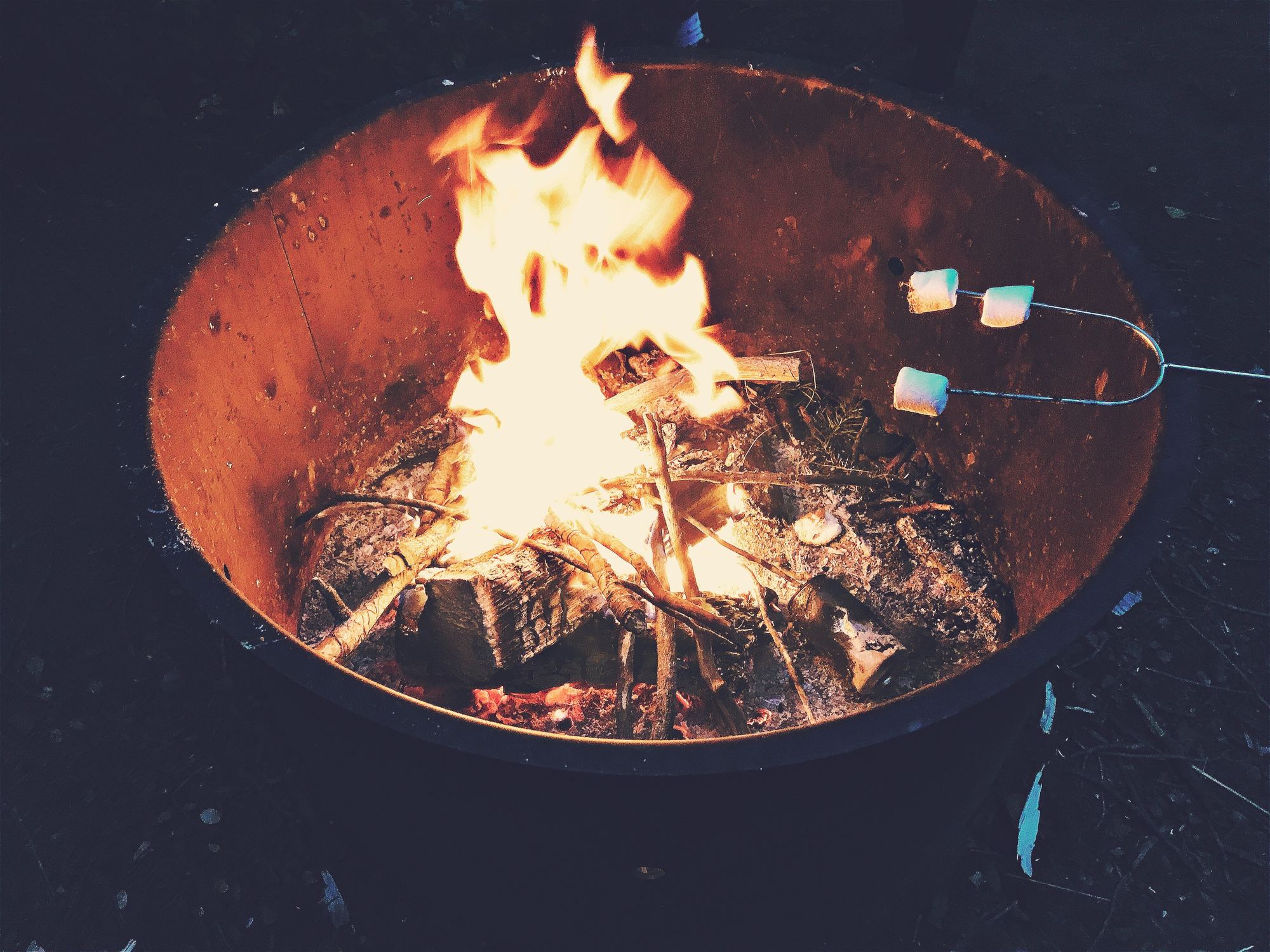
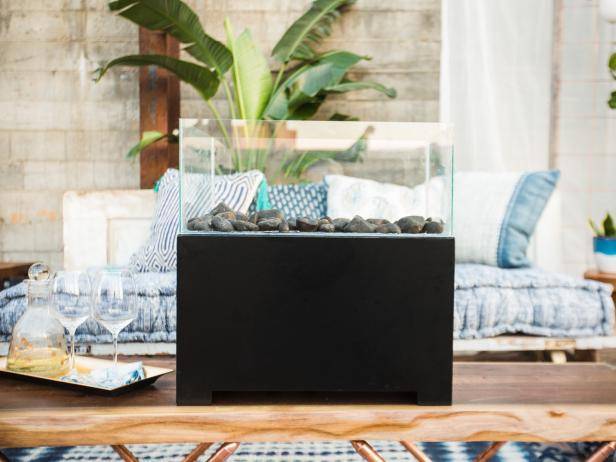
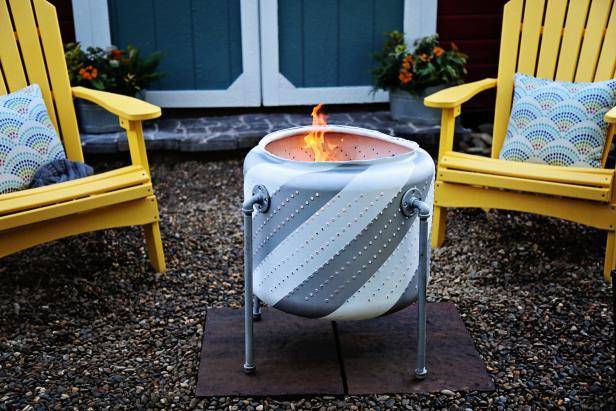
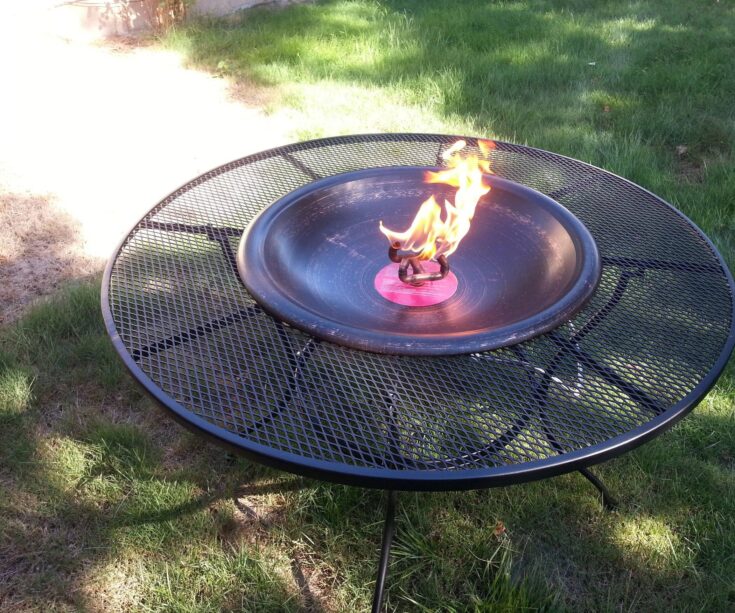
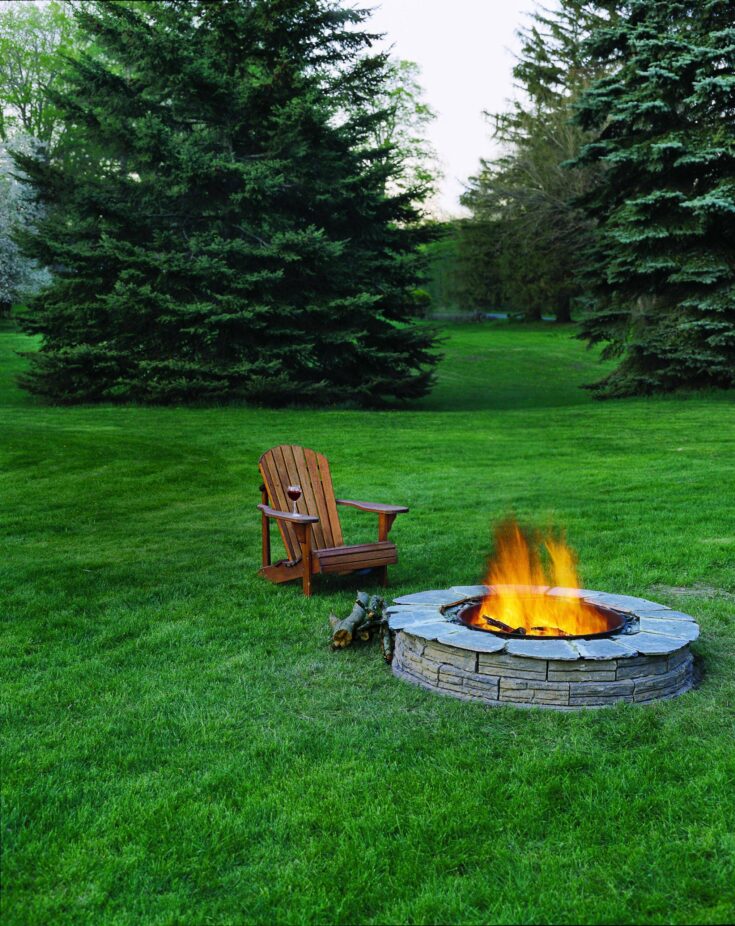
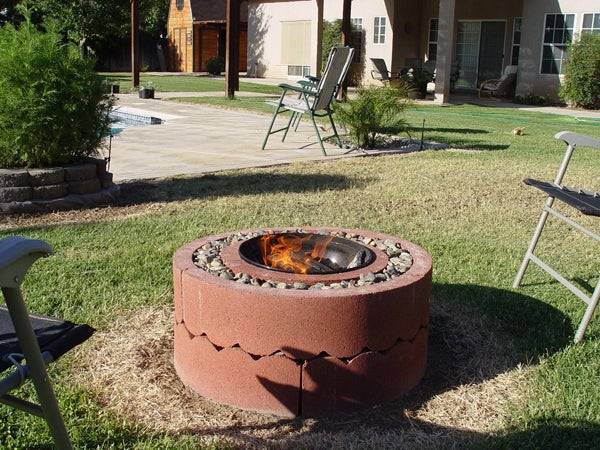
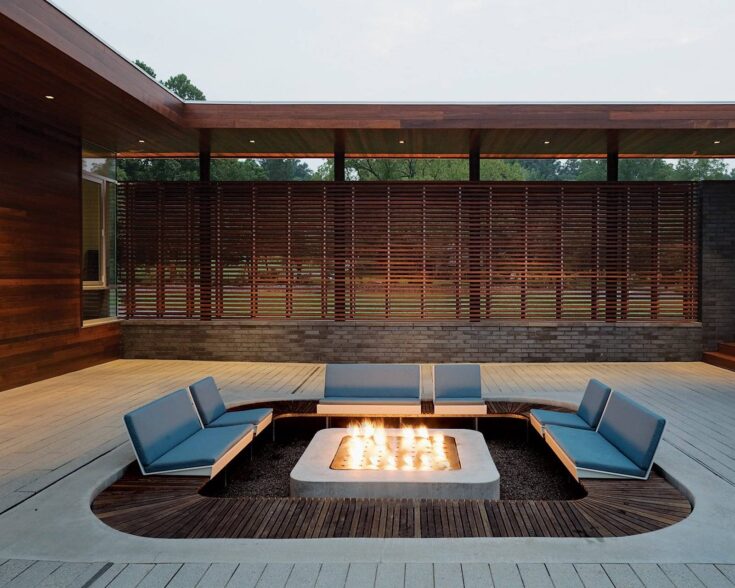
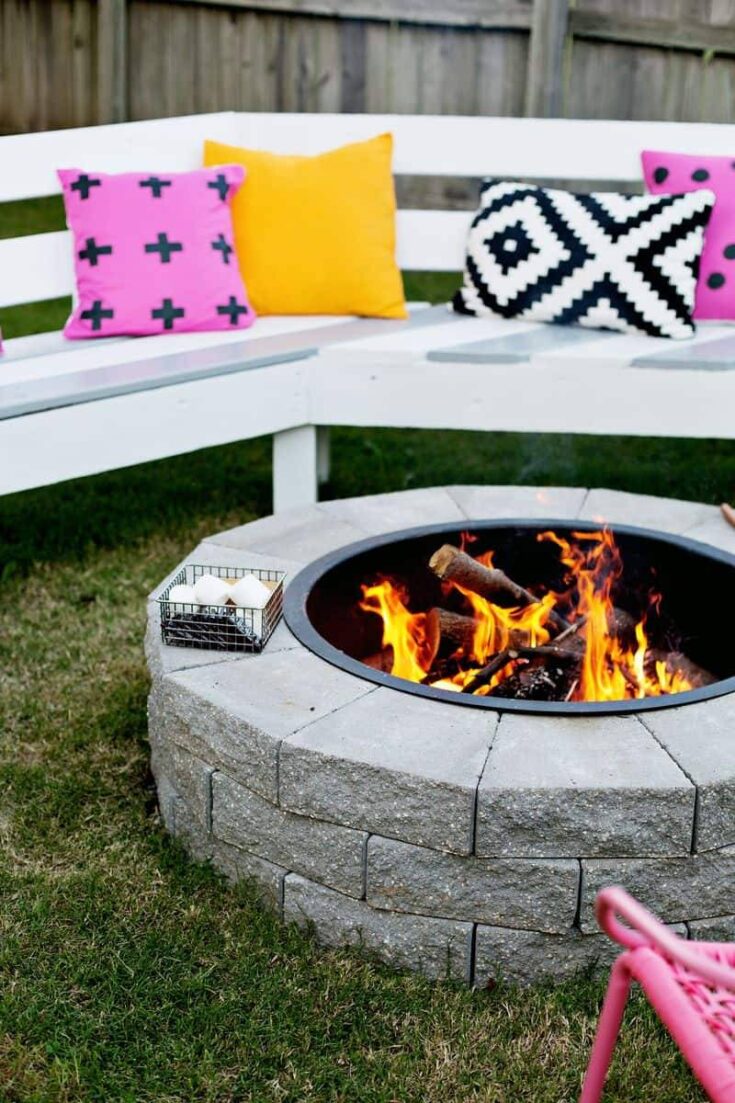
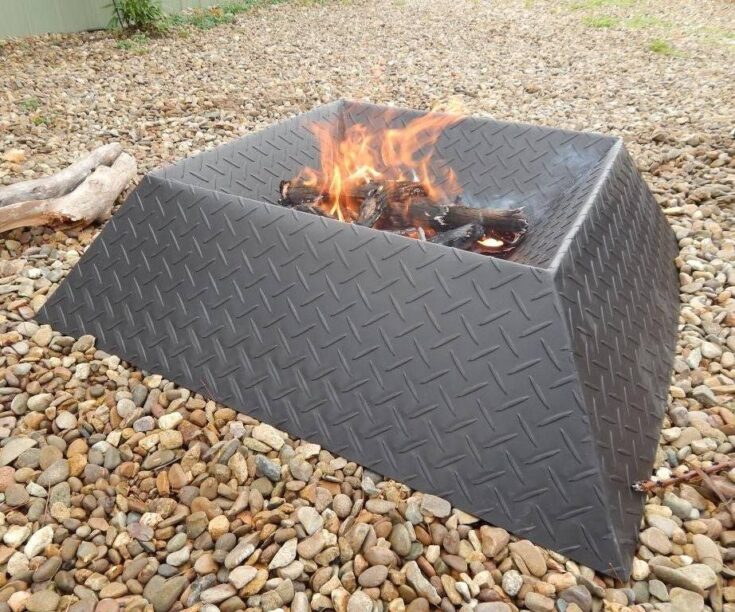
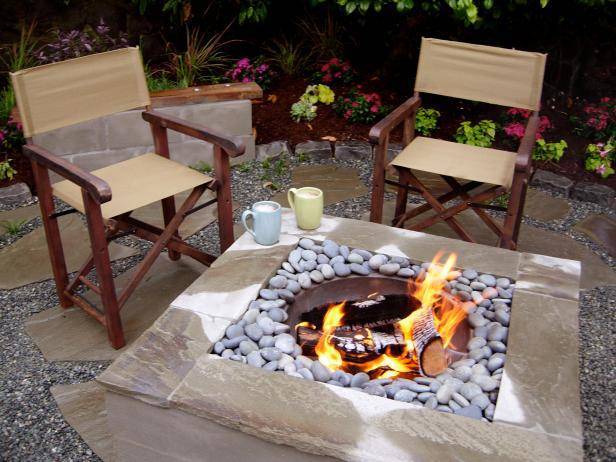
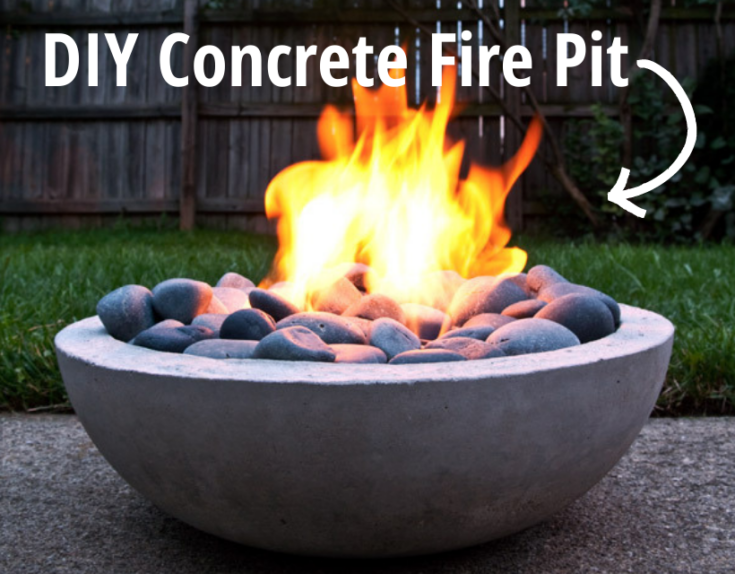

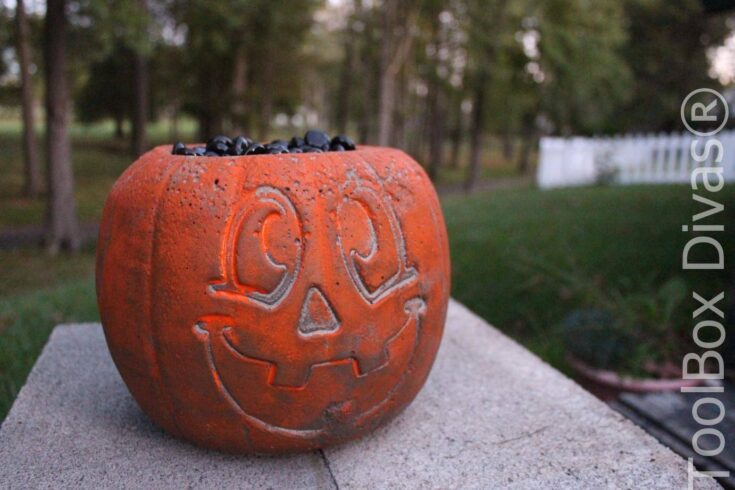
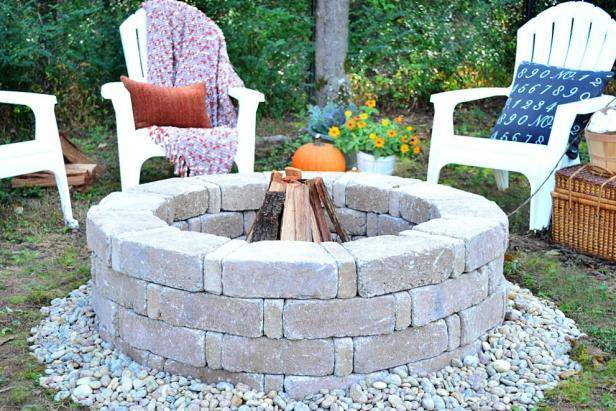
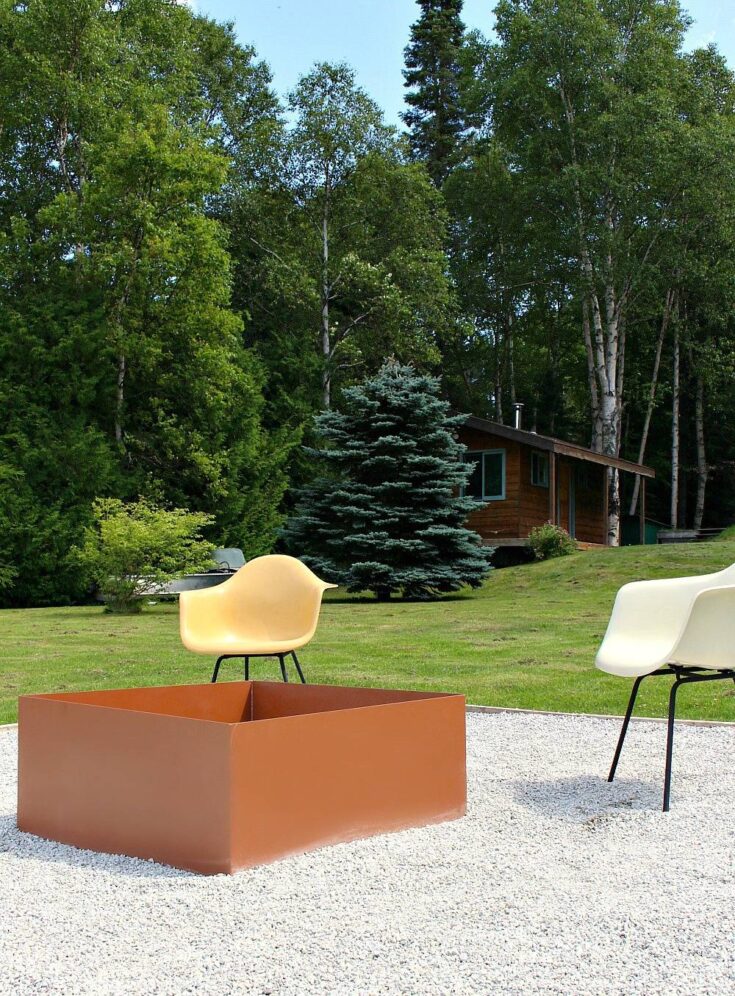
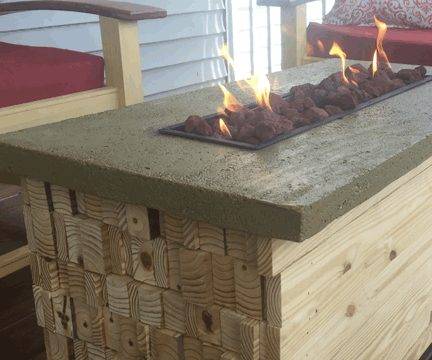
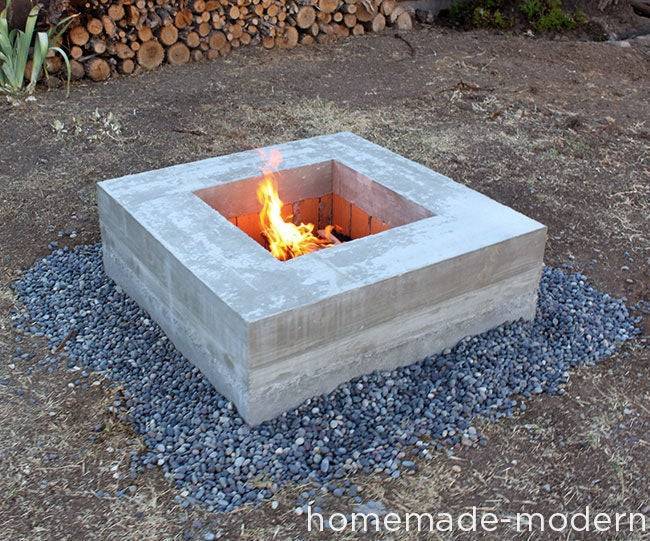
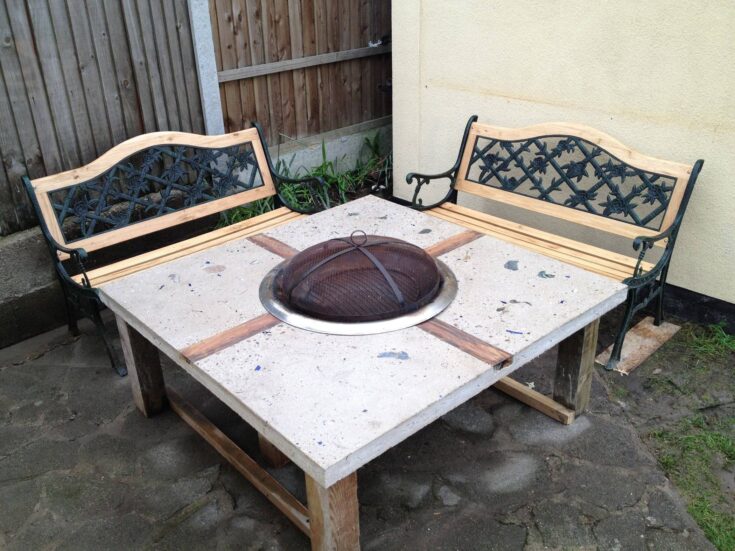
Exposing metal not intended for extreme heat to flame can cause hazardous metal fumes to be released including: zinc oxide, magnesium oxide, chromium, or cadmium. You want to be careful about proposing DIY ideas that involve using metal items (washing machine drums, wheel barrows, bowls) not intended for use with flame. It could cause unintended harm to your readers.
Most info I just googled about metal fumes related to welding of metal, which does not apply here. Yes I admit that most metal items are coated in paints or zinc type galvanizing processes to help avoid corrosion, so care must be taken when repurposing such items for high heat applications. Your comment would have been much more helpful if it were just friendly and informative and not so judgmental and condescending. Washing your toilet improperly can also cause unintended harm. Spread knowledge not fear. 🙂
My daughter was hospitalized after inhaling the toxic fumes from a fire pit made from an old washing machine tub :- Be careful while having fun and become an informed do it yourselfer
We burned tons of fires in old washing machine tubs in Afghanistan. I’m still kickin…
The comment WAS friendly and informative. If it was received any other way, then it falls on the receiving end. Why have people needed cotton candy and freaking rainbows to digest anything without a smiley face after it?! Is there no such thing as professional courtesy anymore? This is a DIY site, not group therapy. If you didn’t know about potential dangers of burning old was machines, then you DID learn something; knowledge was spread. Grow a thicker skin, people. Sheesh.